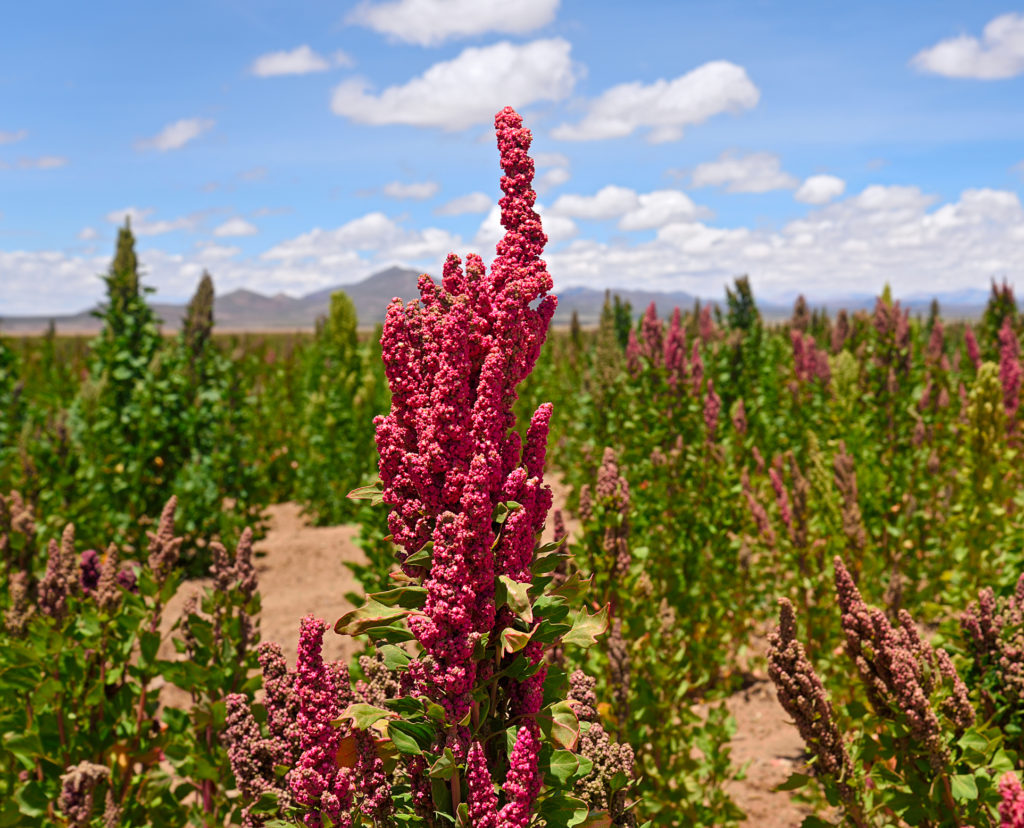You’ve probably heard of quinoa by now (pronounced ‘keen-waa’). With its rise in popularity, quinoa has been hailed as a superfood in recent years for its rich nutrient content.
In 1980, only eight countries were growing quinoa. By 2015 this figure had increased to ninety-five! This popular pseudo-grain didn’t become the ‘golden grain’1https://www.ncbi.nlm.nih.gov/pmc/articles/PMC7074363/ for nothing. It is one of our top 5 ‘good grains’ here at CG! Read on to find 5 ways that quinoa can benefit YOUR health.
What is quinoa?
Quinoa is technically a seed, but is classified as a “wholegrain” because it has a similar nutrient profile and is consumed in similar ways to other grains. This low-GI, gluten-free pseudo-grain has been around for a long time; it was reportedly first domesticated in South America over 7000 years ago.2https://pubmed.ncbi.nlm.nih.gov/27242826/
Quinoa has a mild flavour and slightly nutty texture to it, making it ideal for both sweet and savoury dishes. Nowadays you’ll typically find 3 popular types of quinoa grain: white, red and black, as well as quinoa flakes and flour.
Why is quinoa good for you?
1. Rich in nutrients
Quinoa is rich in a range of nutrients – more so than many other grains! 100g of cooked quinoa will provide you with.3https://nutritiondata.self.com/facts/cereal-grains-and-pasta/10352/2
- Energy – 120kcal
- Carbohydrate – 21.3g
- Fibre – 2.8g – 10% of your daily recommended intake (30g!)
- Protein – 4.4g
- Fat – 1.9g
.. as well as an array of vitamins and minerals: vitamin B12, B vitamins, magnesium, phosphorous, manganese, copper, zinc, selenium, iron, calcium and potassium!
2. Complete source of protein
Your body is made of protein. Protein is made up of amino acids, 9 of which are called ‘essential’ amino acids, because you must obtain them through your diet. ‘Non-essential’ amino acids your body can make for itself.
Meat is a complete protein. If you’re following a meat-free diet, you will know the importance of consuming a variety of plant-based protein sources, to ensure you get all the essential amino acids your body needs. Quinoa is one of those valuable plant-based foods that is considered a ‘complete protein’.
3. High in fibre
Fibre is crucial for your digestive health as it aids gastrointestinal motility, reducing your risk of diarrhoea and constipation, and nourishes and diversifies your gut bacteria4https://www.nutrition.org.uk/healthy-sustainable-diets/starchy-foods-sugar-and-fibre/fibre/. Fibre-rich foods can also aid weight loss by increasing satiety.5https://www.ncbi.nlm.nih.gov/books/NBK559033/
Did you know that quinoa contains up to twice as much fibre per 100g as rice and couscous? Why not shake up your meals and swap out your rice for quinoa next time – or ease yourself in with a half-and-half mix!
4. Helps regulate blood sugar levels
The glycaemic index (GI) rates foods by how quickly they affect your blood sugar levels. Quinoa is low on the GI scale and research shows that it can help slow the release of energy into your body, reducing blood sugar6https://pubmed.ncbi.nlm.nih.gov/29130716/ and providing you with longer-lasting energy.
5. Reduces inflammation
Quinoa is a rich source of quercetin, which acts as an antioxidant in the body. Research shows that it can reduce inflammation and free radical damage, preventing certain chronic diseases such as cardiovascular disease, neurodegenerative disorders and some cancers.7https://pubmed.ncbi.nlm.nih.gov/25272572/
However…
Importantly, quinoa also contains antinutrients such as saponins, phytic acid and tannins, which can bind to important nutrients, inhibiting their absorption into your body. Soaking, rinsing thoroughly and sprouting your quinoa are great ways to reduce the antinutrient profile before cooking.
While quinoa is gluten-free, it is important to check that your quinoa has been processed in a protected environment, to avoid accidental contamination by other gluten-containing grains such as wheat, barley or rye.
How do I prepare quinoa? And how do I eat it?
Rinse 1 cup of quinoa thoroughly and add to a pan with 1 1/2 cups of water. Simmer gently for 15 minutes or until cooked. Add a splash more water if needed!
Quinoa is great served hot as a replacement for rice, or cold as a hearty addition to a salad. Why not add a tablespoon to your morning porridge to diversify your fibre intake!
Why not try this Tuna & Avocado Quinoa Salad, Mushroom & Spinach Quinoa Risotto or Sweet Breakfast Quinoa!
Where can I find quinoa?
Quinoa can be found in most supermarkets and health food stores nowadays, or ordered online.
References
- 1
- 2
- 3
- 4
- 5
- 6
- 7















